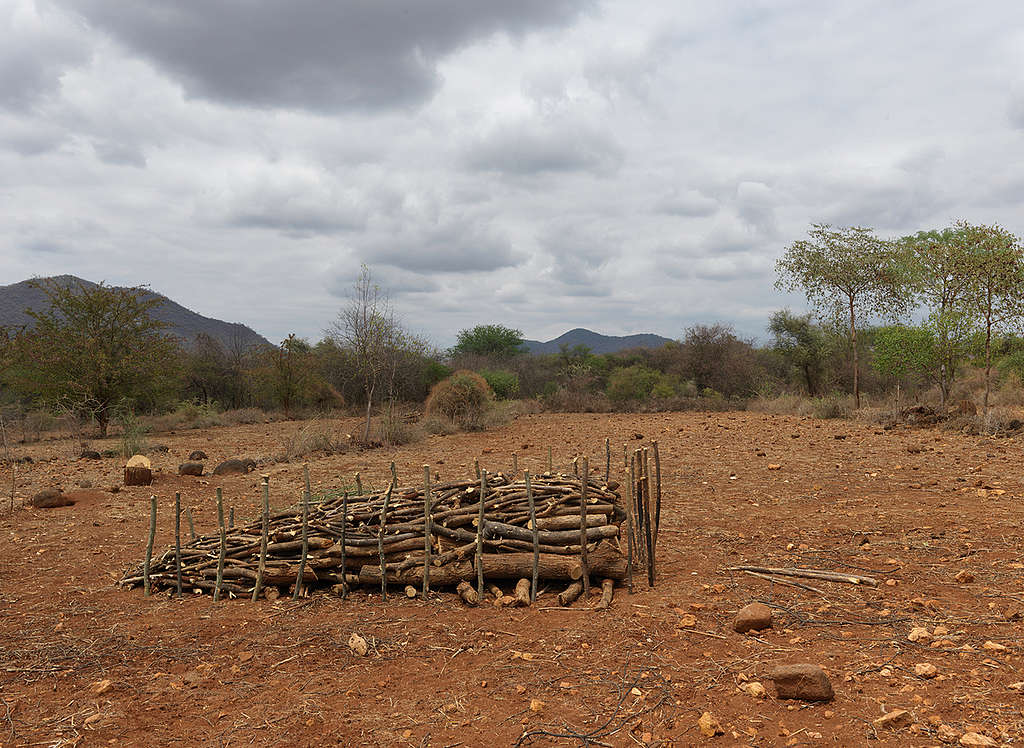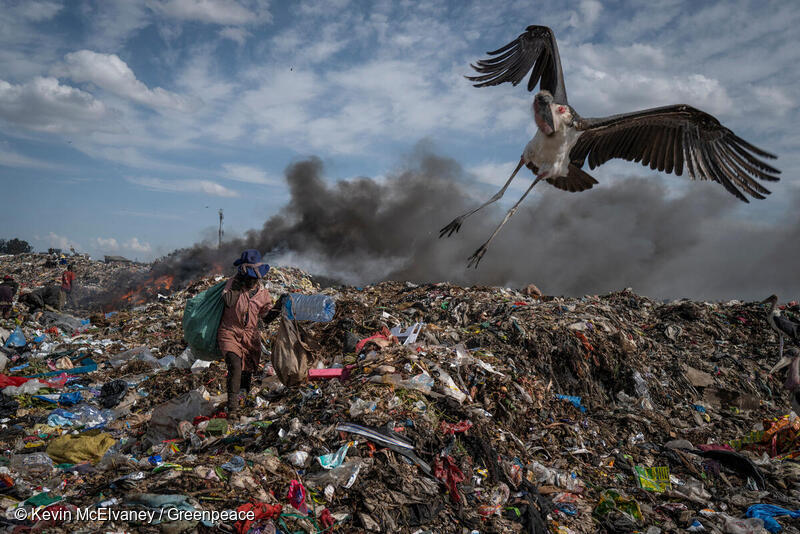Deforestation In Africa & Climate Change
Africa’s forest cover is on a steady decline, weakening the ability of the continent’s ecosystems to withstand climate change.
From the tropical rainforests of the Congo Basin to the Guinean Forests of West Africa to the Coastal Forests of East Africa, entire forests are being eliminated slowly but surely.
This accelerating destruction of the rainforests (that form a precious cooling band around the Earth’s equator) is one of the main causes of climate change, making it critical to urgently address the problem of deforestation in Africa.
Forests are of the utmost essence as they affect the climate in several ways.
The importance of forests cannot be overstated. Forests play a huge role in keeping the earth’s climate resilient because they act as carbon “sinks” slowing down the effects of global warming.
In addition to this important function, the tropical forests of Africa have been cast in other roles just as major.
For example:
- Deforestation in Africa needs to be kept in check because trees generate dependable amounts of rainfall. After oceans, forests are the most efficient sources of precipitation. As the climate changes, severe droughts are likely to become more common. Afforestation (planting trees where there were none) in strategic locations, may be able to increase rainfall in key areas.
- Soil erosion and degradation is also reduced due to the good soil cover provided by the trees and shrubs in a forest.
- Forests also provide habitats to diverse animal species. Forested landscapes not only provide a home to terrestrial biodiversity but also to birds of the air as well as a number of insect species. In addition to this, tropical rainforest waters – including rivers, creeks, lakes, and swamps – are home to the majority of freshwater fish species.
- Forests also are the source of livelihood for many human settlements.
- Forests take in carbon dioxide. But, they also clean the air of carbon monoxide, nitrogen dioxide and sulfur dioxide – all huge contributors to air pollution. It is important to note that forests play a huge role in the carbon cycle on our planet. When forests are cut down, carbon absorption ceases and the carbon stored in the trees is released into the atmosphere as CO2 if the wood is burned or even if it is left to rot after the deforestation process.

What’s the Link between Deforestation In Africa & Climate Change?
Large shifts in the distribution of Africa’s forest cover as a result of deforestation in the continent has no shortage of consequences.
Deforestation in the developing countries of Africa exacerbates the effects of climate change in the following ways.
1. Deforestation worsens the on-going water crisis in the continent
In Kenya, for example, most of her forests can be found in mountain areas.
These forested mountains are usually frequently referred to as ‘water towers’ because they contain many springs and streams that are the sources of major rivers that eventually drain into lakes.
In Kenya, there’s two main ‘water towers’, The Mau Forest Complex and the Mt. Elgon forest, which straddles the Kenya-Uganda border.
The Mau Forest Complex for example, is the main water source for 12 rivers that feed into lakes Victoria and Turkana.
Both of these ‘water towers’ face intense pressures from deforestation. The degradation of these forests for agriculture, charcoal burning and encroachment for settlement, have undermined the ability of these forested landscapes to provide critical ecosystem services such as the provision of water.
These forests have the ability to store rainwater during the rainy season and release it slowly during drier periods. Hence, the continued degradation of these forests contributes to a growing water crisis.
The importance of these water reserves/resources calls us to secure our existing freshwater supplies.
The rest of Kenya’s major forest “water towers” are Mt. Kenya, Aberdares and Cherangany Hills. They provide a majority of the country’s water resources and are central to Kenya’s economic and social well-being.
The clearing of these forests has knock-on effects on how the forest’s ecosystem functions and its resilience is reduced.
Ecosystem processes such as water cycles and groundwater supplies are negatively affected. Since trees trap moisture and encourage cloud cover, a loss in tree cover causes the local climate to only get drier.
This then intensifies Kenya’s and the continent’s ongoing water crisis.
2. Deforestation intensifies the frequency & impact of floods.
With forest loss, the local community loses the system that performed the valuable but often under-appreciated service of protecting the community from floods.
The forest acts as a sort of sponge, soaking up rainfall brought by tropical storms while anchoring soils and releasing water at regular intervals.
Deforestation leads to floods and this loss of trees is making the devastating problem of flooding even worse because the water holding capacity of the soil is dependent on the number of trees.
As the rate of deforestation in Africa increases, the soil structure changes and the soil particles held firmly get disturbed.
The loss of ground cover due to deforestation results in flash floods during heavy rainfall.
When there is heavy rainfall, the rainwater does not seep down into the ground and is not absorbed by the trees. Hence, it leads to flooding.
This regulating feature of tropical rainforests can help moderate destructive flood cycles that can occur when forests are cleared.
When forest cover is lost, runoff rapidly flows into streams, elevating river levels and subjecting downstream villages, cities, and agricultural fields to flooding, especially during the rainy season.
The more frequent loss of life from floods is an indication that climate change has set in.

3. Deforestation results in a significant reduction in rainfall
When rainforests disappear, so does the rain.
Agricultural productivity in the tropics is at risk from a deforestation-induced increase in mean temperatures and from a decline in mean rainfall or rainfall frequency.
Agriculture has always been deeply dependent on the weather, especially in Africa, with farmers needing a steady supply of sun, warmth, and rains in order to reliably produce the food that all we depend on for our survival.
In the forests’ water cycles usually, moisture is transpired and evaporated into the atmosphere, forming rain clouds before being precipitated as rain back onto the forest.
As deforestation in Africa increases, less moisture is transpired into the atmosphere resulting in the formation of fewer rain clouds. Leading to less rain and subsequently this decline in rainfall could subject an area to drought.
So forests are not the only contributor to rain, but they can influence the amount and timing of downpours.

4. Increased global warming due to Africa’s deforestation
A large amount of carbon is released into the atmosphere when trees are removed from their habitats.
Trees trap greenhouse gases. Trees are basically living storehouses of carbon dioxide, the “greenhouse gas” most responsible for the earth’s temperature rise and changes in the planet’s climate.
Carbon dioxide is known to trap the heat from sunlight and subsequently form a blanket of heat in the atmosphere.
However, through photosynthetic chemical reactions of forests, carbon dioxide can be absorbed from the atmosphere, combined with sunlight, to generate energy for plants.
When trees are logged and burnt they release the carbon they have stored throughout their lifetime into the atmosphere as carbon dioxide. This increases the severity of climate change by advancing global warming.
Making sure Africa’s surviving tropical forests are preserved while planting new trees to replace those lost to deforestation on the continent could help reduce the severity of climate change.
This is due to the fact that the trees absorb more carbon from the air, and ease the local impact of climate change by regulating local weather conditions.
The ongoing deforestation over the west and central African countries leads to irreversible regional climatic changes.
Global warming blamed on carbon emissions has also caused the shrinking of the ice cap on Mt Kenya, an important water reservoir in East Africa.
Causes of Deforestation In Africa
The most important driver of forest loss in Africa is industrial activities rather than human activities such as subsistence agriculture, often using slash-and-burn / fallow techniques to clear land.
To tackle deforestation we need to understand the question of what activities are driving it. And they include:
1. Commercial Logging
2. Failing Government Policies
Governments are simply not doing their part. DRC comes to mind as her government continues to issue illegal concession contracts to foreign as well as local companies and continues to violate its own 2002 moratorium on new logging titles.
Leaders of African countries need to embrace ambitious domestic and international forest conservation policies based on the latest science in order for us to live in a world free of severe climate disruption.
3. Charcoal Production
Forest degradation in Africa linked to charcoal production is also an issue for the continent. Charcoal is the main cooking fuel for urban populations in many African countries.
Urbanization and population growth are driving an increase in demand for charcoal, as deforestation intensifies.
The traditional methods of making charcoal lead to high carbon emissions and are a waste of wood resources. As more people than ever rely on charcoal especially in sub Saharan Africa, large-scale deforestation ensues.
In many cases, there is potential for alternative renewable energy sources , but this requires supportive policies from the governments of African countries.
4. The expansion of agricultural land
80% of global deforestation is a result of agricultural production
Many forests are cleared to make way for palm oil plantations.The Camvert farm is one such palm oil plantation project.
The Cameroon Vert SA (Camvert) is an agro-industrial complex for the plantation and processing of oil palms currently being built in Campo, a council located in the department of the ocean, in the southern region of Cameroon.
Its establishment seeks to develop the largest palm plantation in Central Africa, which will swallow up 50,000 hectares of forest spelling out a huge climate disaster for the Congo basin and Africa at large..
Palm oil is the most commonly produced vegetable oil and is found in half of all supermarket products.
It’s cheap, versatile and is added to both food and personal products like lipsticks and shampoo.
Its popularity has spurred people to clear tropical forests to grow more palm trees. Growing the trees that produce the oil requires the leveling of native forests.
The shift towards large-scale agricultural production has consequences for our climate, as forest area is reduced and greater stores of carbon are released into the atmosphere.

Creating a deforestation-free future. Next steps,
The next major wave of deforestation is already here and it is happening in Africa.
We simply are not making enough concrete progress given the massive scale of the deforestation happening in Africa and the urgency of this threat.
Forests continue to disappear and at an alarming rate. We must do more, and with a greater sense of urgency.
If done right, preserving and conserving Africa’s forests will help mitigate the climate change crisis.





Discussion
I believe this site has some really fantastic information for everyone : D.
Thank you for your support.